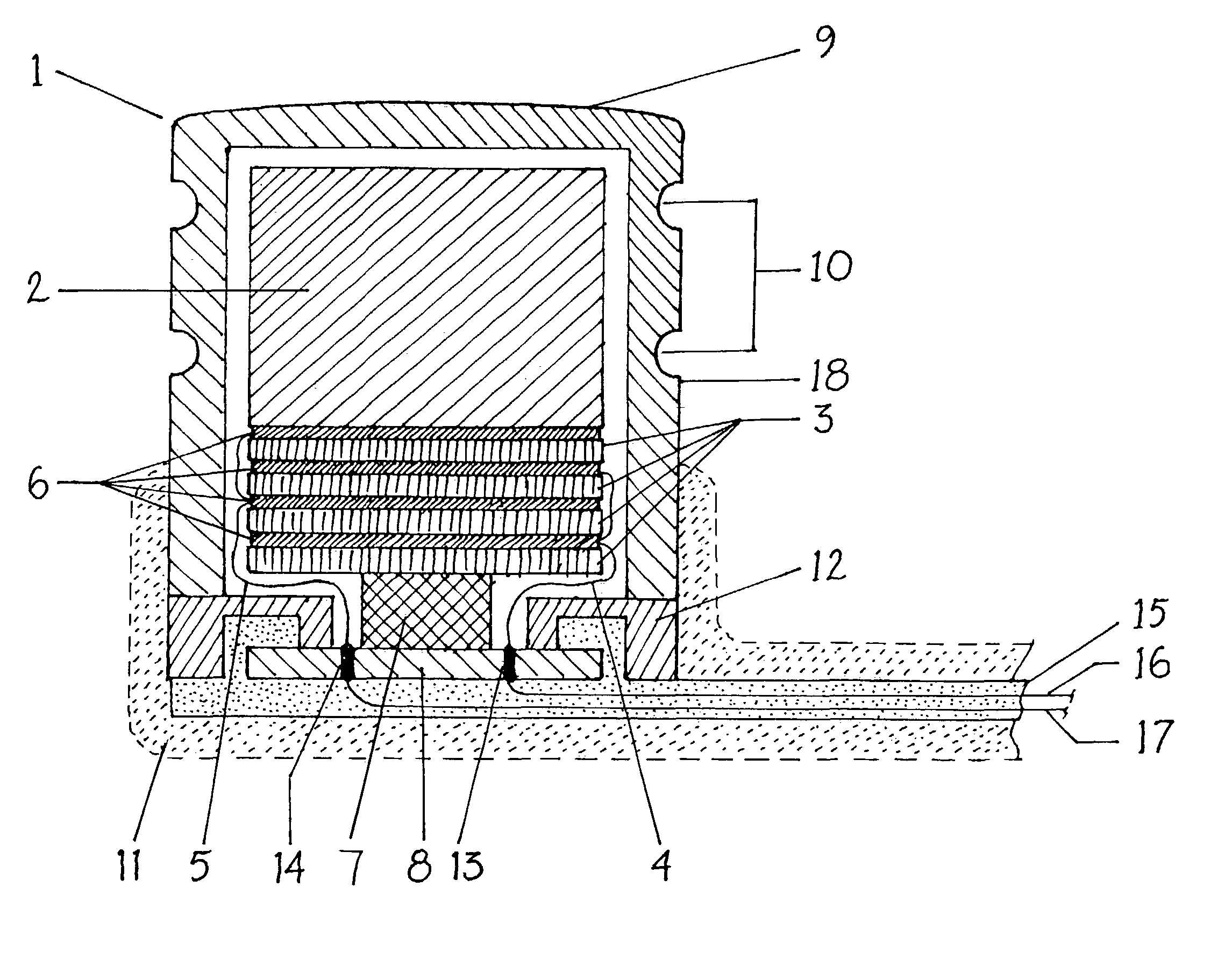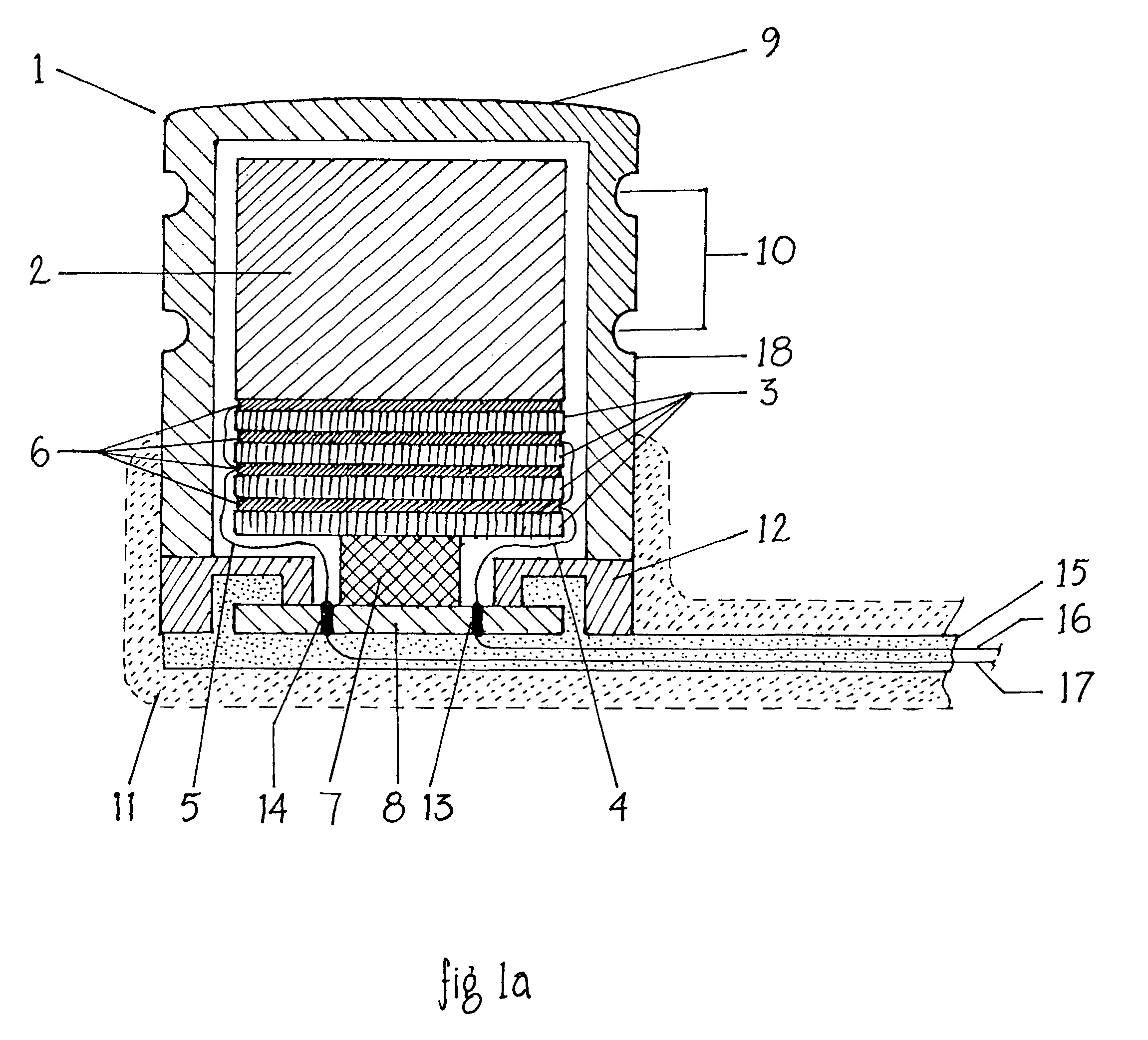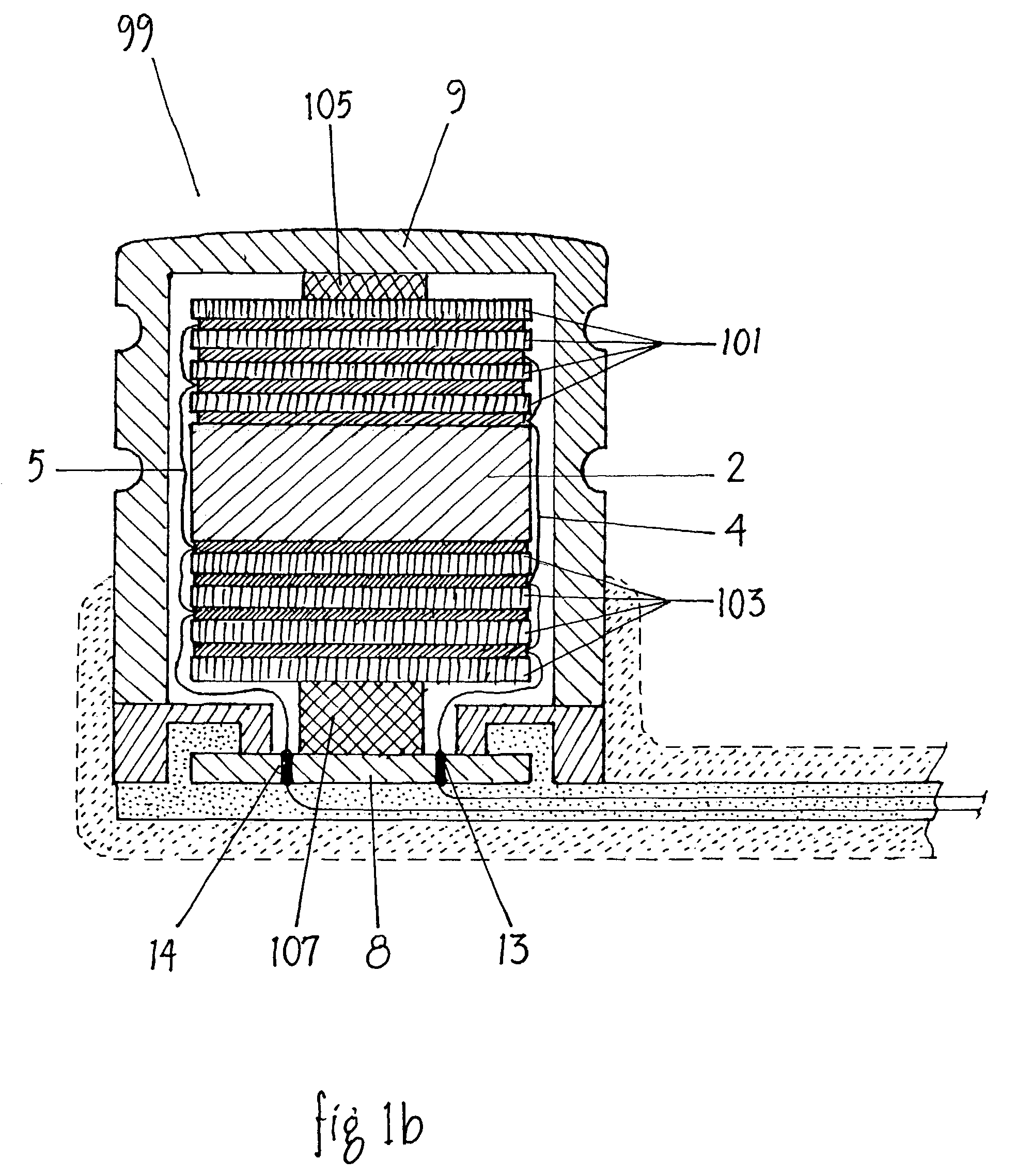Totally implantable hearing prosthesis
a hearing prosthesis and implantable technology, applied in the field of implantable prosthesis, can solve the problems of device rejection, significant disadvantages, poor aesthetics, infection/inflammation around the implantation site, etc., and achieve the effects of low power consumption, no permanent side effects, and easy and safe implanting
- Summary
- Abstract
- Description
- Claims
- Application Information
AI Technical Summary
Benefits of technology
Problems solved by technology
Method used
Image
Examples
Embodiment Construction
[0057]FIG. 1A shows a cross sectional view of the preferred embodiment of the hermetically sealed inertial mass vibrator 1. The transducer is comprised of a plurality of elements as follows: an inertial mass 2, a stack of piezoelectric elements 3 electrically connected together by wires 4 and 5, with a conductive bond layer 6 between the piezoelectric elements, an interface element 7 connecting the piezoelectric elements to a non-conductive insert 8, a hermetic housing 9 containing an osseointegration end with rings 10, an end coated with a compliant material 11, a base ring 12 with pins 13 and 14 penetrating a non-conductive insert 8 bonded to the base ring 12, with a bioinert cable 15 containing electrical conductors 16 and 17 electrically connected to pins 13 and 14.
[0058]The hermetic housing 9 is comprised of a bioinert material such as titanium, or alloys thereof, with substantially cylindrical walls 18, with one end sealed 9 and the other end coated with a compliant material 1...
PUM
 Login to View More
Login to View More Abstract
Description
Claims
Application Information
 Login to View More
Login to View More - R&D
- Intellectual Property
- Life Sciences
- Materials
- Tech Scout
- Unparalleled Data Quality
- Higher Quality Content
- 60% Fewer Hallucinations
Browse by: Latest US Patents, China's latest patents, Technical Efficacy Thesaurus, Application Domain, Technology Topic, Popular Technical Reports.
© 2025 PatSnap. All rights reserved.Legal|Privacy policy|Modern Slavery Act Transparency Statement|Sitemap|About US| Contact US: help@patsnap.com



